
|
|
Comp210: Principles of Computing and Programming
|
All problems will require all (applicable) steps from the design recipe, including a template. Before you tackle the homework, remind yourself of our General Advice, Advice on Homeworks (in particular: staple and provide questions), and the Grading Guidelines.
All problems require suitable test cases that cover the most important issues in a function's domain space!
Remember: Contract, purpose, header and test cases are always required!
For visitors, you need the following documentation:
Be sure to load the teachpack draw.ss!
In this homework we will be exporing a new type of fractal: Tree Fractals.
A TreeFractal starts as a single Line:
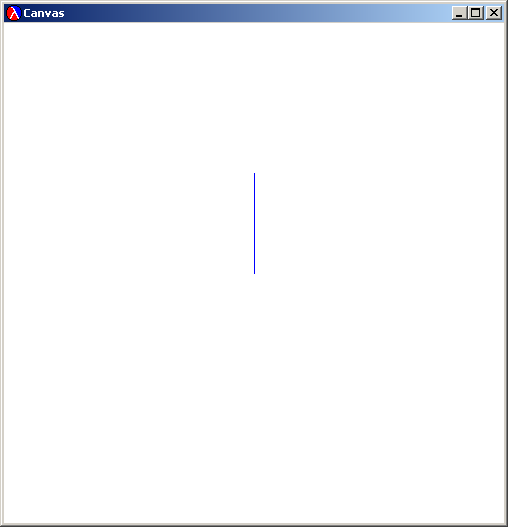
That Line is transformed into a Branch, which is the original Line, plus (in this case, 3) Lines "growing" from its endpoint:
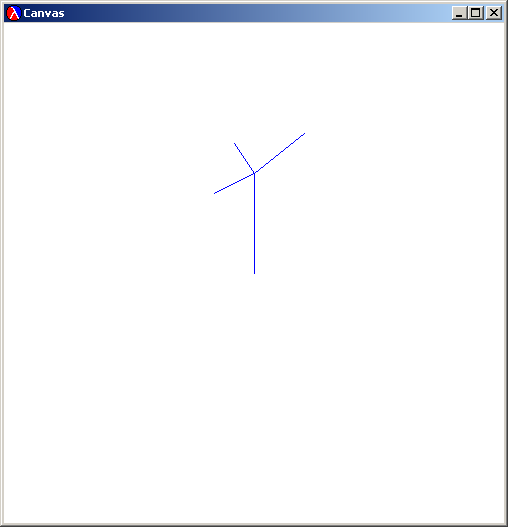
These new Lines are sized and are pointing relative to the original Line. We see that clearly if we go another iteration:
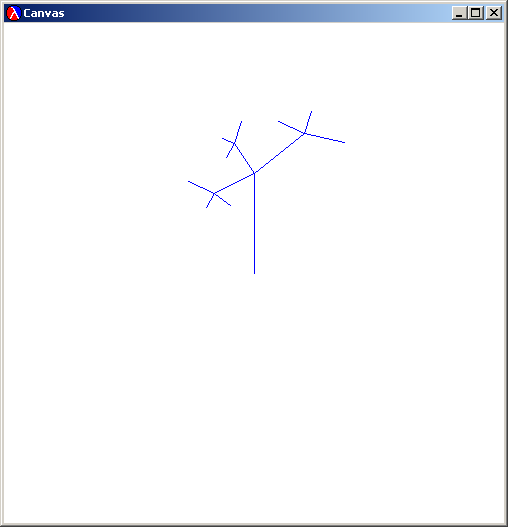
The process simulates the way a plant grows. After 8 iterations, we see a distinctly organic shape forming:
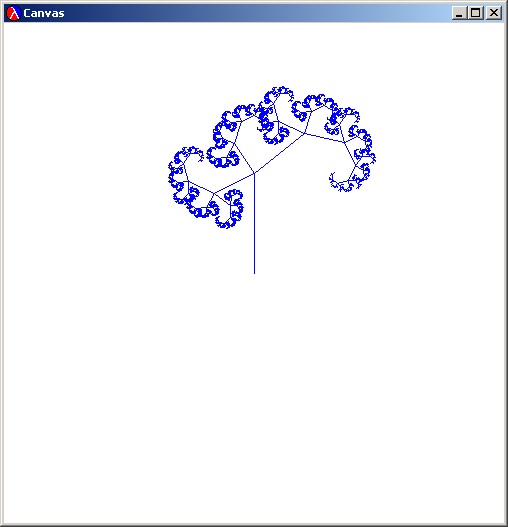
Changing the way a Branch grows from a Line changes the way the TreeFractal looks:
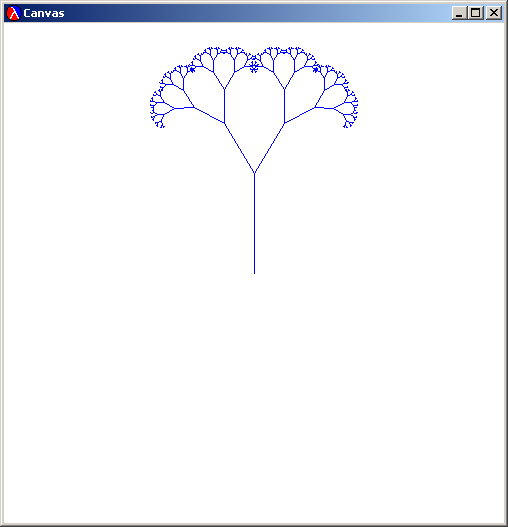
We can clearly see that
;;A TreeFractal is either ;;-- a Line ;;-- a Branch ;;A Line is a struct of two points (posn) ;;(make-Line posn posn) (define-struct Line (p1 p2)) ;;A Branch is a Line plus a list-of-TreeFractals ;; (make-Branch Line list-of-TreeFractal) (define-struct Branch (line loTF)) ;;A list-of-TreeFractal ;; -- empty, or ;; -- (cons [TreeFractal] [list-of-TreeFractal])
The key to TreeFractals is defining a "prototype", which is the pattern of Lines added to the end of a given Line when it "grows" into a Branch. The problem is that the original Line may be of any length, start from anywhere, and pointed in any direction. Mathematically, what we want to do is to define a prototype branching with respect to a well-defined "unit" Line. That is, we define the branches we want with respect to an original Line that is 1 unit tall and originates at the origin, and points in the positive y-direction, i.e. (0, 0)--> (0, 1).
Since the prototype lines have one end at the origin, we only need to specify their end-points. For instance, the above TreeFractals used the following prototype lists of points respectively;
(list (make-posn .5 .4) (make-posn -.2 .3) (make-posn -.4 -.2))
(list (make-posn .3 .5) (make-posn -.3 .5) )
Note that the prototype lines are less than 1 unit in length, otherwise the fractal would grow in size indefinitely. Why?
But in order to grow a Line into a Branch, the prototype lines must be scaled to the relative size of any given Line, rotated so that they point in the correct relative direction, and then translated to sit at the end of the given Line. This means that the transformation of the prototypes for each Line at the ends of the TreeFractal are different. This is a perfect place to use a factory that takes in the original Line and produces a transformation based on that Line. For the mathematically oriented, this transformation is called an "Affine Transformation" and no, you don't need to know its details:
;; make-xform: Line --> (posn --> Line)
;; creates a transformation that will translate a point referenced to (0, 1)
;; into the coordinate system defined by the given line as the unit length
;; along the y-axis.
;; The lambda takes in a point and returns a line that starts at the end of the
;; given line.
(define (make-xform line)
(local
[(define p1x (posn-x (Line-p1 line)))
(define p1y (posn-y (Line-p1 line)))
(define p2x (posn-x (Line-p2 line)))
(define p2y (posn-y (Line-p2 line)))
(define dy (- p2y p1y))
(define dx (- p2x p1x))]
(lambda (p)
(local
[(define x (posn-x p))
(define y (posn-y p))]
(make-Line
(Line-p2 line)
(make-posn
(+ p2x (+ (* dy x) (* dx y)))
(+ p2y (- (* dy y) (* dx x)))))))))
To use this factory, simply map its result (given the original line) over the list of prototype points (refBranches below):
(define branchRefs (list (make-posn .3 .5) (make-posn -.3 .5) )) (map (make-xform line) refBranches))
There are a few housekeeping issues:
We can define up some utilities:
;; defines the width and height of the canvas (define width 500) ;; defines the point at the center of the canvas (define center (make-posn (/ width 2) (/ width 2))) ;; toScreen: posn --> posn ;; translates a point in graph (mathematical)coordinates into a ;; point in the screen (how the points map to the actual screen) coordinates ;; where the origin is at the center of the canvas and positive y direction is ;; vertically up, not down. (define (toScreen p) (make-posn (+ (/ width 2) (posn-x p)) (+ (/ width 2) (- (posn-y p))))) ;; drawLine: Line color --> boolean ;; draws a line in given in graph coordinates ;; returns true if succesful (define (drawLine l color) (draw-solid-line (toScreen (Line-p1 l)) (toScreen (Line-p2 l)) color)) ;; Opens up a new square canvas of size width (start width width)
With these utilities we don't have to worry about the screen at all and all of our drawings will come out as we expect, with the origin at the center of the canvas and the positive y-axis pointing upward.
The above code can be downloaded here: hw09.scm
Ok, we're finally ready to get started! The key here is to take things slowly and methodically. Remember, write small units -- test small units. Do NOT attempt to write the whole program at once!!
Step back for a moment and admire how such small chunks of simple code that are decoupled from each other can generate such complex output. This is the power of abstraction and is the heart of object-oriented and functional programming. This style of programming is arguably more object-oriented than functional, though in a true object-oriented language, there is one more powerful abstraction tool ("polymorphism" if you care) that really opens up the doors of abstraction.
We'll stop here, but it should bother you that the base case Line is hard-coded into our system. Also, the way the code is tied to the Branch being defined as having the original line in it should strike you as problematic. So, for 20 extra credit points, can you figure out a way to push the abstraction of our code up another notch?
Here's another extra credit problem for 15 points: Using foldr, write a factory function called "make-multiNextBranch" that takes in a list of list of prototype points and returns a function that will take a Line and return a Branch. Compare this with Prob. 4b above. This factory should take the original line and successively grow it once with each of the supplied lists of prototype points, returning the end result Branch. Show that without disturbing any other existing code, you can now create a TreeFractal that repeats an arbitrary series of different branching growths. Now that's power!
110 pts total + 35 extra credit.
Last Revised Sunday, 24-Oct-2004 17:02:04 CDT
©2004 Stephen Wong and Dung Nguyen